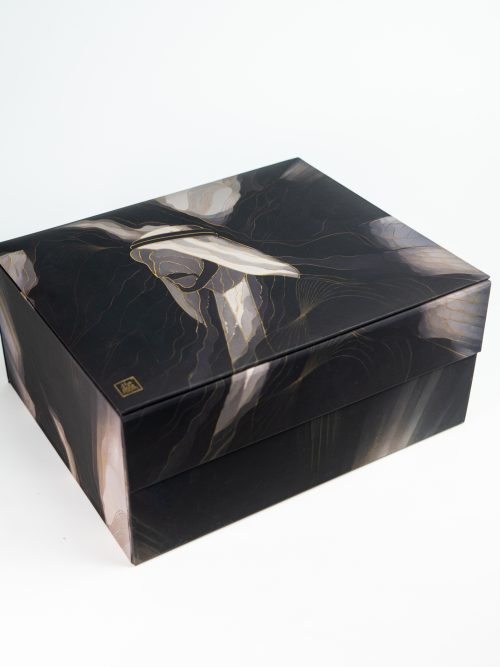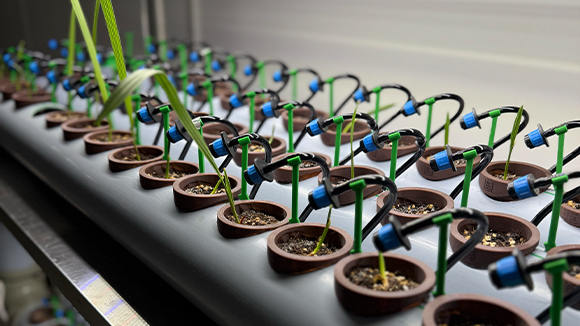Call us: 600-5-DATES
0.00
Free Shipping on All Orders Over $100
The best discounts this week
Every week you can find the best discounts here.
Your Seeds of Heritage seedling is more than a plant—it is a living continuation of the dates you enjoyed, and a symbol of UAE culture and sustainability. With the right care, your seedling will grow into a strong young palm that can one day become a family heirloom. This guide provides the essential steps to help you nurture your tree with confidence.
Light and Placement
Date palm seedlings love bright, indirect sunlight. Place your seedling near a south- or east-facing window where it can receive steady natural light during the day. If direct midday sun is too harsh, use a sheer curtain to soften it.
Inside apartments or homes, the best placement is close to a window where the seedling benefits not only from light but also from the natural warmth coming through the glass. This positioning creates a micro-environment that is slightly closer to outdoor temperatures, while still keeping the plant safe from sudden heat or cold.
Avoid dark corners and spots under artificial light only, as this will slow growth. Outdoors, the seedling can adapt to shaded patios or balconies, provided it is protected from strong afternoon sun in its early months.
Watering – Finding the Balance
Consistency is the most important rule. The soil in your seedling’s pot should stay slightly moist but never waterlogged. A good habit is to check the top two centimeters of soil with your finger—if it feels dry, it is time to water.
For the pot you received, about half a cup (120 ml) once every 7–10 days is enough in most homes. In sunnier, warmer rooms, you may water a little more often; in cooler, shaded spots, less. Always allow excess water to drain freely—date palms dislike standing in water.
For best results, use the bottom-watering method: place the pot in a shallow dish of water for 10–15 minutes and let the soil absorb moisture naturally. This prevents fragile roots from being disturbed and avoids accidental overwatering.
Overwatering will show as yellowing or drooping leaves, while underwatering causes fronds to dry, curl, or stunt. With balance, your seedling will remain strong and healthy.
Soil and Drainage
The pot you received already contains our custom blend of soil and sand. This mix is designed to balance nutrients with excellent drainage—rich soil to feed the young palm, and sand to ensure water flows freely around the roots. It is the same type of mix used traditionally in UAE palm plantations, adapted for home environments.
When the time comes to repot your seedling, we recommend preparing a similar mix:
- 60–70% nutrient-rich soil (for palm nutrition and root strength)
- 30–40% washed sand (to prevent compaction and waterlogging)
This balance keeps the palm healthy, mimicking the conditions it naturally thrives in. Always use a pot with proper drainage holes to allow excess water to escape.
Temperature and Humidity
In nature, date palms thrive in warm desert climates, but your seedling is adaptable to normal room temperatures. There is no need to adjust your air conditioning. What matters is avoiding extremes.
- Too cold: Continuous exposure to very cool air (below 15 °C) will slow growth.
- Too hot or dry: Placing the seedling right under an AC vent or in a closed, overheated corner may stress the plant.
A good solution is to place your seedling near a window where sunlight warms the glass. This creates a pocket of warmth around the plant, closer to its natural outdoor environment, while still remaining indoors.
Date palms do not require extra humidity, but in very dry homes, an occasional light mist around the fronds—not directly on the soil—can help keep them fresh.
Potting and Repotting
Your seedling will remain comfortable in the biodegradable 3D-printed pot for the first two months. After this period, or when you notice roots beginning to show at the base, it is time to move it to a larger pot.
Choose a container that is four to five times the size of the current pot. This gives the young palm space to spread its roots and continue growing comfortably for several more months. When repotting, use the same soil-and-sand mix described earlier, and follow the same watering techniques.
Repotting is best done during spring or early summer, when the seedling is in its natural growing phase. Always handle it gently, keeping the root ball intact as you transfer it.
Fertilizer and Nutrients
During its first two months in our soil blend, your seedling does not require extra feeding. As it grows older and stronger, you can begin adding a slow-release palm fertilizer once or twice during the growing seasons (spring and summer). Apply sparingly, as too much can damage young roots.
Common Issues to Watch For
- Yellowing leaves: Usually caused by overwatering.
- Dry, curling fronds: Often a sign of underwatering or too much direct heat.
- Pests indoors: Rare, but check occasionally for small mites or scale insects; these can be treated early with natural sprays.
In Summary
Your Seeds of Heritage seedling arrives ready to thrive in its custom soil mix. By giving it bright light, steady watering, normal home temperatures, and patience, you will see it grow steadily over the months.
When the time comes to repot, remember: a larger pot, the same soil-and-sand balance, and continued gentle care will ensure your palm develops into a strong young tree. With each frond that opens, you are not just raising a plant—you are nurturing a legacy.










